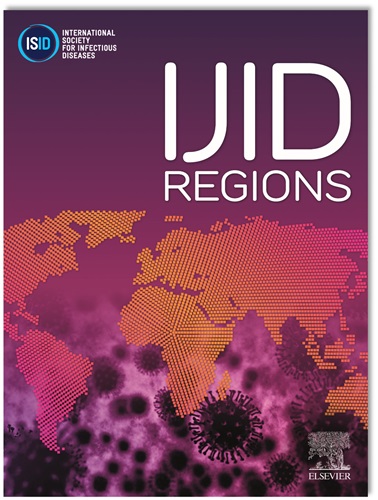Metabolomic profiling of plasma reveals differential disease severity markers in avian influenza A(H7N9) infection patients
IF 4.8
2区 医学
Q1 INFECTIOUS DISEASES
引用次数: 0
Abstract
Objectives
Avian influenza such as H7N9 is currently a major global public health risk, and at present, there is a lack of relevant diagnostic and treatment markers.
Methods
We collected plasma samples from 104 confirmed H7N9 patients, 31 of whom died. Plasma metabolites were detected by UHPLC-HRMS, and a survival prediction model based on metabolites was constructed by machine-learning models.
Results
A total of 1536 metabolites were identified in the plasma samples of H7N9 patients, of which 64 metabolites were up-regulated and 35 metabolites were down-regulated in the death group. The enrichment analysis of tryptophan metabolism, porphyrin metabolism, and riboflavin metabolism were significantly up-regulated in the death group. We found that most lipids and lipid–like molecules were down-regulated in the death group, and organoheterocyclic compounds were significantly up-regulated in the death group. A machine-learning model was constructed for predicting mortality based on porphobilinogen, 5-hydroxyindole-3-acetic acid, L-kynurenine, Biliverdin, and D-dimer. The AUC on the test set was 0.929.
Conclusion
We first revealed the plasma metabolomic characteristics of H7N9 patients and found that a machine-learning model based on plasma metabolites could predict the risk of death for H7N9 in the early stage of admission.
血浆代谢组学分析揭示甲型H7N9禽流感感染患者不同疾病严重程度标志物
目的:H7N9等禽流感是目前全球重大公共卫生风险,目前缺乏相关的诊断和治疗标志物。方法:采集104例H7N9确诊患者的血浆样本,其中31例死亡。采用UHPLC-HRMS检测血浆代谢物,通过机器学习模型构建基于代谢物的生存预测模型。结果:H7N9患者血浆样本共检出1536种代谢物,其中死亡组64种代谢物上调,35种代谢物下调。死亡组色氨酸代谢、卟啉代谢和核黄素代谢富集分析均显著上调。我们发现大多数脂类和类脂分子在死亡组中下调,而有机杂环化合物在死亡组中显著上调。基于卟啉胆碱原、5-羟基吲哚-3-乙酸、l -犬尿氨酸、胆绿素和d -二聚体建立了预测死亡率的机器学习模型。测试集的AUC为0.929。结论:我们首次揭示了H7N9患者的血浆代谢组学特征,发现基于血浆代谢物的机器学习模型可以在入院早期预测H7N9患者的死亡风险。
本文章由计算机程序翻译,如有差异,请以英文原文为准。
求助全文
约1分钟内获得全文
求助全文
来源期刊
CiteScore
18.90
自引率
2.40%
发文量
1020
审稿时长
30 days
期刊介绍:
International Journal of Infectious Diseases (IJID)
Publisher: International Society for Infectious Diseases
Publication Frequency: Monthly
Type: Peer-reviewed, Open Access
Scope:
Publishes original clinical and laboratory-based research.
Reports clinical trials, reviews, and some case reports.
Focuses on epidemiology, clinical diagnosis, treatment, and control of infectious diseases.
Emphasizes diseases common in under-resourced countries.

 求助内容:
求助内容: 应助结果提醒方式:
应助结果提醒方式:


